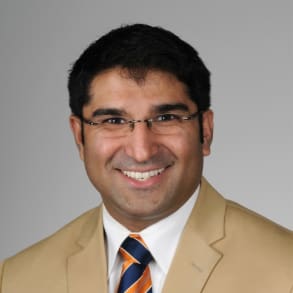DR. SATISH N. NADIG: The kidney chains are really revolutionized the field of transplantation. So when someone comes forward, and they have a pair. They have a spouse or a child who needs a transplant, but they're unfortunately incompatible to donate their kidney, we've historically been part of the National Kidney registry-- or the NKR chain-- where we would pair up with other pairs, incompatible pairs, in the country. And if a donor here in South Carolina is a match to a recipient in Colorado, let's say, but their donor in Colorado is a match to our recipient, we can actually prepare a two-way, crisscross of a chain.
Now what's interesting is that if someone comes forward as an altruistic donor-- doesn't really have anybody in particular they want to donate to, but out of the goodness of their heart they want to donate their kidney-- they don't have a particular recipient they can donate to. So historically what we've done here at MUSC is try to find somebody within our own center that they can donate to, or apply that to this NKR chain.
But what we're doing now is developing a library of people here within our own institution of incompatible pairs and starting that chain, of sorts. So you have the altruistic donor that can donate to the recipient whose donor was not compatible with them, then their donor donates to another recipient whose donor donates to another recipient, and in theory can go on for infinity. We often-- obviously for manpower and timing purposes-- can't do that, so we're scheduling them so that they will end on either a pediatric patient, if that's the wish of the altruistic donor, or someone who's really in dire need on the list who has a long wait time or in need of a transplant in a short period of time.
We do the donor operation laparoscopically with minimally invasive techniques, and we take the kidney out through the belly button of the donor. And the patients usually go home one or two days after surgery and tolerate the operation quite well. Having the expertise here at the Medical University of South Carolina to be able to offer kidney transplants-- and living donor kidney transplants, at that-- is just a remarkable privilege.
These kidneys are the gold standard kidneys. They work right away. If you're on dialysis, you're off dialysis immediately. As soon as I let the clamps go, the kidney begins to make urine and patients are off dialysis. And it's watching physiology in action. In the recovery room, their color gets better. Children are often playing the very next day-- and sometimes the evening of. It's just remarkable to watch nature take over and supplant the harshness of dialysis with what's more natural of a kidney transplant.
So being able to offer those services, but also being able to keep that all within the confines of MUSC is fantastic for a couple of reasons. One, we know we're treating our own citizens and our own people on our list so that they don't have to wait a long time to get their kidneys or to find a compatible pair out there in the country. The other thing is that the organ is outside of the body for a short period of time. We don't have to wait for it to fly from Colorado, or from California, or wherever their donor may be. They're just right next door. And so we decrease the cold time, and we are allowed to really help the patients on our own list in an expeditious manner. And so it's truly the ideal situation for a living donor chain.
